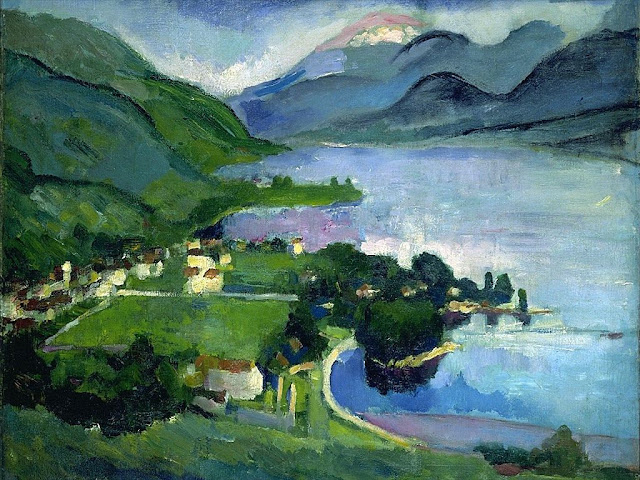As Faithful Readers of this blog know, I deal with designs of objects as well as my usual focus on painting and illustration. Today's subject is well enough known to aviation buffs, but might come as a surprise to the uninitiated. It's the Blohm und Voss Bv 141 reconnaissance aircraft of World War 2 vintage that was built in test quantities, but never reached mass production. Go the the link for more information.
The Bv 141's designer was Richard Vogt who thrived on coming up with strange looking airplane proposals; I should really write a post dealing with more of them.
Reconnaissance aircraft in those days ideally should have plenty of visibility from the cabin so as to observe and photograph conditions in a combat zone or enemy rear area. The twist that helped shape the Bv 141 was that it was required to be a single-engine design. A conventional front-mounted engine placement would result in severe constriction of view, something antithetical to the reconnaissance ideal. A pusher-engine placement normally meant a twin-boom feature for supporting the tail. The defects here are decreased visibility (but not so serious as that from an engine in the plane's nose) and the elimination of effective defensive armament (a rear-facing machine gun would have to fire through the propeller arc).
Given those constraints, that clever Vogt came up with this:
Gallery
Three-view drawing
Vogt created an asymmetrical design where the main visual obstruction was to the left; visibility ahead, below and to the rear was good.
Probably the prototype aircraft
Note that it has prewar German civilian aircraft markings; it first flew 25 February 1938.
Seen from the rear, above
Seen from 3/4 above
An in-flight view
According to sources on the Internet, the plane flew well despite its odd appearance. It failed to enter production because it was under-powered and better motors were reserved for combat planes. Note changes to the epennage.

















































